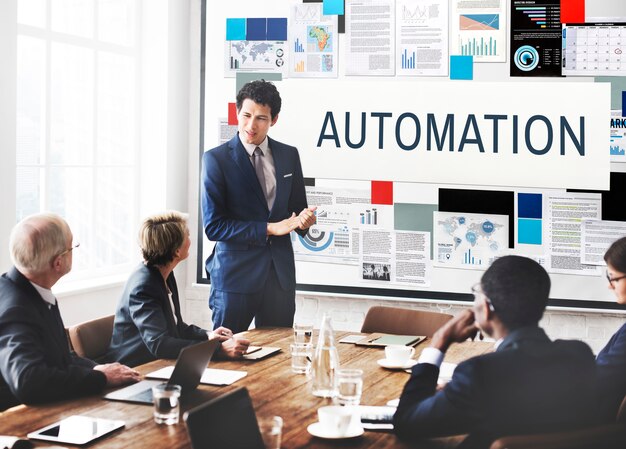In the dynamic landscape of modern businesses, automation has become a crucial tool for efficiency and growth. Developing an automation strategy is not merely about adopting technology; it requires careful planning and execution. The journey towards automation is an exciting one, and the critical first step sets the tone for the entire process. With our expertise, we can confidently guide you in getting this crucial step right and pave the way for success in automating your tasks.
Understanding Your Objectives
Before delving into the intricacies of automation, it’s essential to have a clear understanding of your objectives. 🎯 Identifying the specific areas where automation can bring the most significant benefits is the first step in developing an automation strategy. Assessing your current workflows and pinpointing pain points helps in determining where automation can make a tangible difference.
Once you’ve identified your objectives, prioritise them based on their impact on your business operations. 📊 To kickstart your automation strategy, it’s vital to align it with your overarching goals and objectives. Let’s work together to make it happen! It sets a focused direction for the subsequent stages of planning and implementation.
Assessing Existing Processes
With your objectives defined, the following first step in developing an automation strategy involves assessing your existing processes. 🔄 This entails a comprehensive analysis of your workflows, including manual tasks, bottlenecks, and inefficiencies. Understanding how your processes currently operate is crucial for identifying areas ripe for automation.
During the assessment phase, gather feedback from stakeholders across various departments. 👥 Insights are an effective means of gaining valuable views on pain points and identifying areas where automation can facilitate operations with utmost confidence. This collaborative approach enhances buy-in and ensures that the automation strategy aligns with the needs of the entire organisation.
Researching Automation Solutions
Armed with insights from your assessment, the following first step in developing an automation strategy is researching automation solutions. 🔍 This involves exploring available technologies, platforms, and tools that can address your specific requirements. Consider factors such as scalability, compatibility, and ease of integration with existing systems.
While researching automation solutions, it’s crucial to evaluate their potential impact on your workflows and business processes. 💡 Look for solutions that not only automate repetitive tasks but also offer opportunities for optimization and innovation. Choose technologies that align with your long-term strategic objectives and support future growth.
Planning for Implementation
With a clear understanding of your objectives and the identification of suitable automation solutions, the first step in developing an automation strategy transitions into the planning phase. 📝 Developing a comprehensive roadmap that clearly defines the steps needed to implement automation across your organisation is absolutely crucial. Define milestones, timelines, and key performance indicators to track progress effectively.
During the planning process, consider factors such as resource allocation, training requirements, and change management strategies. 💼 Ensure that your team is equipped with the necessary skills and knowledge to leverage automation effectively. Communicate the benefits of automation transparently to foster enthusiasm and minimise resistance to change.
Conclusion
To start your automation journey, let’s make sure it aligns with your business goals and operations. This sets us up for success and exciting growth!🌱 By understanding your objectives, assessing existing processes, researching automation solutions, and planning for implementation, you set the stage for a smooth transition towards a more efficient and productive future.
FAQs (Frequently Asked Questions) about Automation Strategy
- Q: Why is the first step in developing an automation strategy crucial?
A: The first step provides clarity on objectives, identifies areas for improvement, and guides subsequent planning and implementation efforts.
- Q: How can automation benefit businesses?
A: Embracing automation is a surefire way to boost efficiency, accuracy, and scalability while liberating resources for more strategic and innovative pursuits.
- Q: What role does Amrep Inspect play in automation strategy?
A: Amrep Inspect provides automation solutions tailored to businesses’ unique needs, helping streamline processes and drive growth. 🚀
In essence, the first step in developing an automation strategy is about laying a solid foundation for transformational change. By understanding your objectives, assessing processes, researching solutions, and planning meticulously, you pave the way for a successful automation journey. With the right approach and mindset, automation can propel your business toward greater efficiency, productivity, and competitiveness. 🌟

